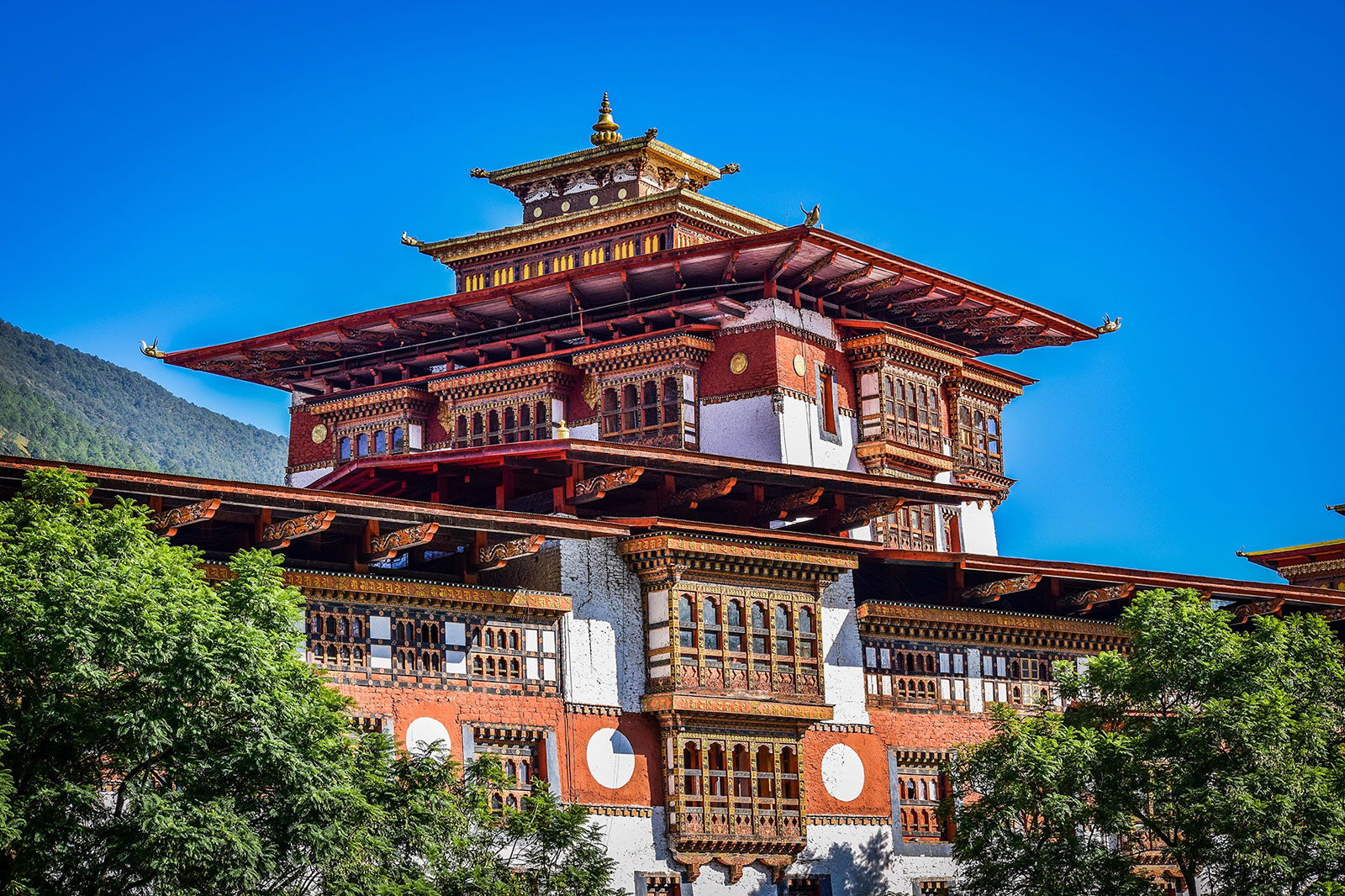Bhutan Bird Watching Tour.Bhutan is a small Buddhist kingdom in the eastern Himalaya, sandwiched between Tibet in the north and India to the south. The recorded avifauna is over 616 species. The forest cover of over 72% and protected National Parks of 26% of the total land makes Bhutan one of the world’s most ideal places to watch diverse birds, which are impossible or difficult in other parts of the world. Environmental degradation is minimum unlike in other countries. The diverse and undisturbed forests promote different habitats best suited for all types of birds to thrive in the mountainous terrain. It has made Bhutan a high bio-diversity conservation hotspot known as Eastern Himalayan hotspot.
Bhutan is fortunate to have pristine environment and virgin forests, giving rise to habitats for diverse birds. The government’s commitment to preserve floral and faunal diversity protects the bird habitats. The government policy to maintain60 percent of the total land under forest at all times assures that the habitats of birds are not destroyed in the future. The strong conservation policy may interfere with the economic development but it definitely providesthe best and perhaps rare opportunity in the world for the bird lovers.
The rugged terrain and huge variations in altitude (300m in the south to 5500m in the north) give rise to different climatic zones. Therefore, birds of alltypes can be found from the sweltering tropics of the south to glacial alpine regions of the north. The temperate Phobjikha Valley highland marshes is much loved by the endangered Black Necked Cranes as their winter home while the lush tropical rain forests of the south shelters the Rufous-Necked Hornbill s. The rugged terrain and slow journey often gives an impression that Bhutan is much bigger although the size is similar to Switzerland.
Bhutan has a long list of birds due to its ecological diversity and different climate from subtropics to alpine environment. Only 675 species of birds have been recorded so far. The most popular and widely known bird is the Black Neck Crane, a rare and endangered crane. Because of its unique features play online pokies for free and behavior the Black Neck Cranefinds a special place in the Bhutanese folklore. The bird is well protected.Kill or injure a Black Neck Crane and you may spend rest of your life behind bars.
Annually in the late autumn, hundreds flock to Phobjikha, a glacial valley in a remote area. With purpose, the valley does not have electrical power andit protects the Black Neck Cranes .Thrung Throng is the Bhutanese name for the bird and many Bhutanese legends and myths reflect the respect and praises for this bird. After arrival from the Tibetan plateau the birds are honored with a festival dance by the Black Neck Crane Dancers. The Pailas’ fish eagle, another migratory birdconsidered to be rare, also migrates to Bhutan from Tibet and northern India. This bird isspotted near Wangdiduring the approach of spring season. It is oftenseen with other birds such as Ospreys and Pied Avocet. As the seasons change from summer to winter, numerous species of bird migrate to lower altitudes. These species includesnow pigeons, rose finches, accentors, grosbeaks, and pheasants mainly the Himalayan monal, blood pheasant and satyrtragopan.
In Bhutan, it is a common sight to findthe wall creeper, white capped water redstarts, the blue whistling-thrush, spotted nutcracker, yellow blue magpie in the pine forest and the red-billed choughs on the roofs of fortresses. Buddhist ethic prohibits killing and all animals in Bhutan are protected. The Forest and Nature Conservation Act ofBhutanoutlines several bird species as totally protected. Some of these species are Raven, Black Neck Cranes, Peacock, Monal Pheasantand the Rufous-Necked Hornbill.
Bird watching tours blend well with refreshing views of breathtaking sceneries, imposing architecture, friendly people and natural spring beauty of this tiny mountainous kingdom. The tour ensures that you are travelling right through the main endemic bird areas of Bhutan,so that you will able to see most of the 616 species recorded so far in Bhutan. The trip will also make you understand how the culture of Bhutanese people is closely linked to nature.
We offer birding tours from west to east Bhutan in spring, early summer and autumn.









